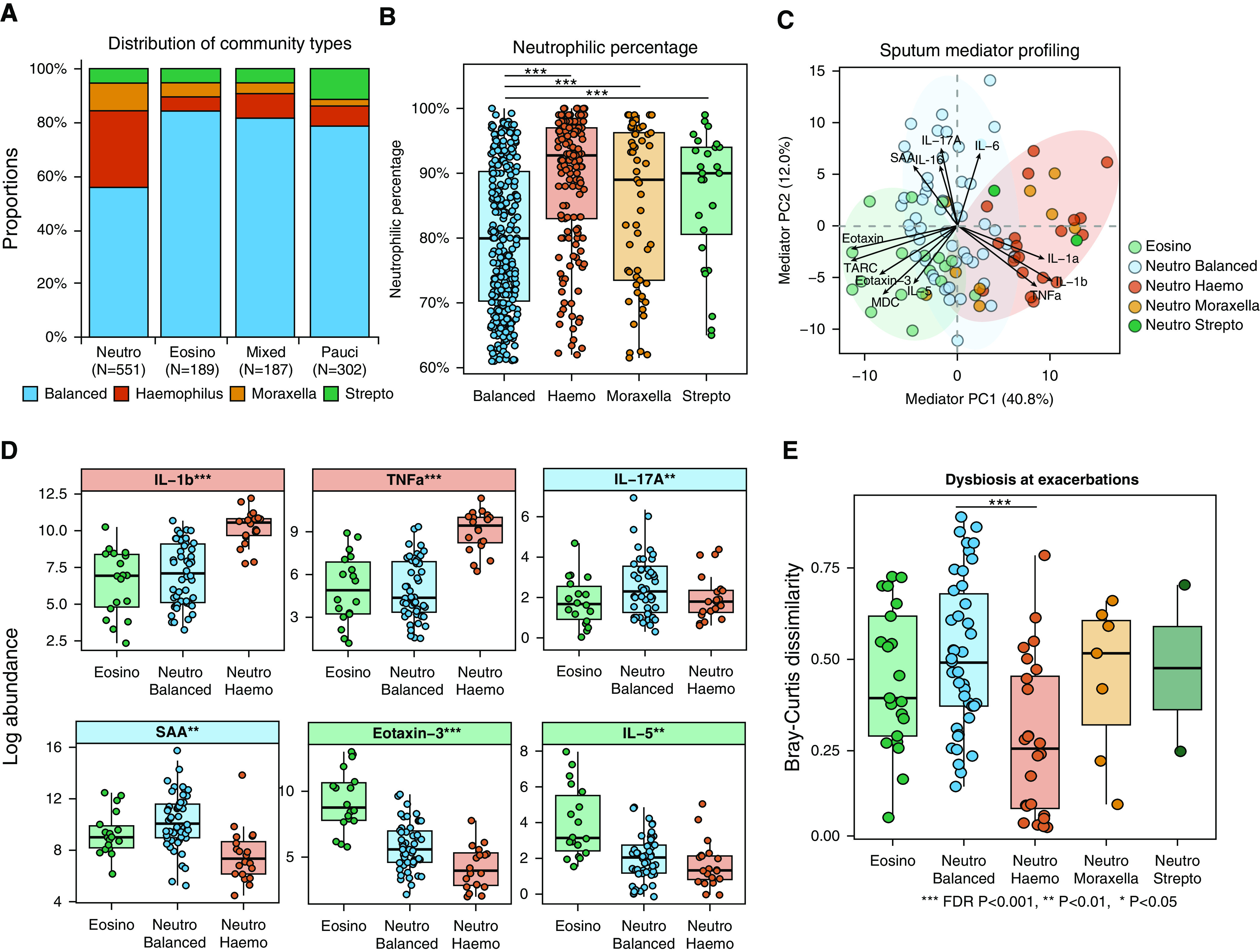Figure 2.

The microbiome in neutrophilic (Neutro) chronic obstructive pulmonary disease (COPD) was heterogeneous. (A) The distribution of four community types across Neutro, eosinophilic (Eosino), mixed, and paucigranulocytic (Pauci) subgroups in the COPDMAP (COPD Medical Research Council/Association of the British Pharmaceutical Industry) and AERIS (Acute Exacerbation and Respiratory Infections in COPD) cohorts. (B) The sputum Neutro percentage in Neutro samples across four community types in the COPDMAP and AERIS cohorts. There was a significantly decreased Neutro percentage in the Neutro balanced subgroup compared with the other subgroups. (C) Principal component analysis on sputum mediators for the Neutro and Eosino subgroups in COPDMAP. Neutro samples were further colored according to their microbiome community types. The Neutro Haemophilus (Haemo), Neutro balanced, and Eosino subgroups were clustered separately. (D) Box-and-whisker plots showing the sputum mediators most elevated in the Neutro Haemo, Neutro balanced, and Eosino subgroups in COPDMAP. (E) The greatest Bray-Curtis dissimilarity for paired stability–exacerbation samples in the Neutro balanced subgroup compared with the other subgroups in the COPDMAP and AERIS cohorts, indicating the greatest microbiome shifts during exacerbations in this subgroup. *False discovery rate (FDR) P < 0.05, **FDR P < 0.01, and ***FDR P < 0.001. PC = principal component; SAA = serum amyloid A; Strepto = Streptococcus.
